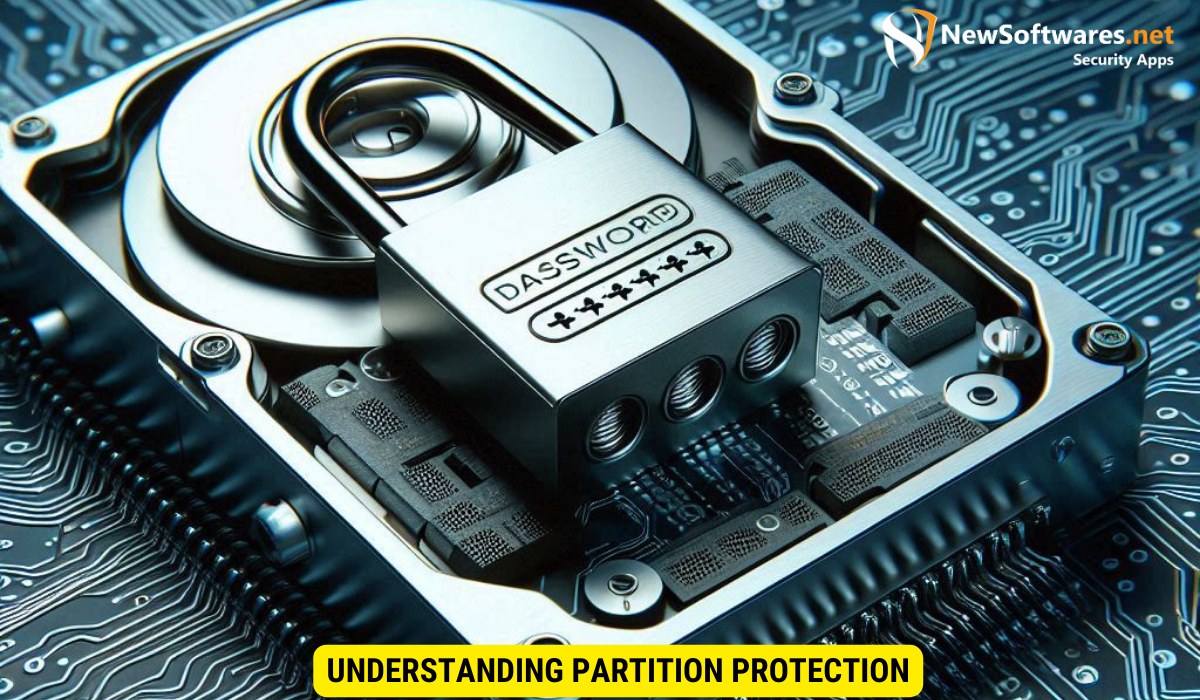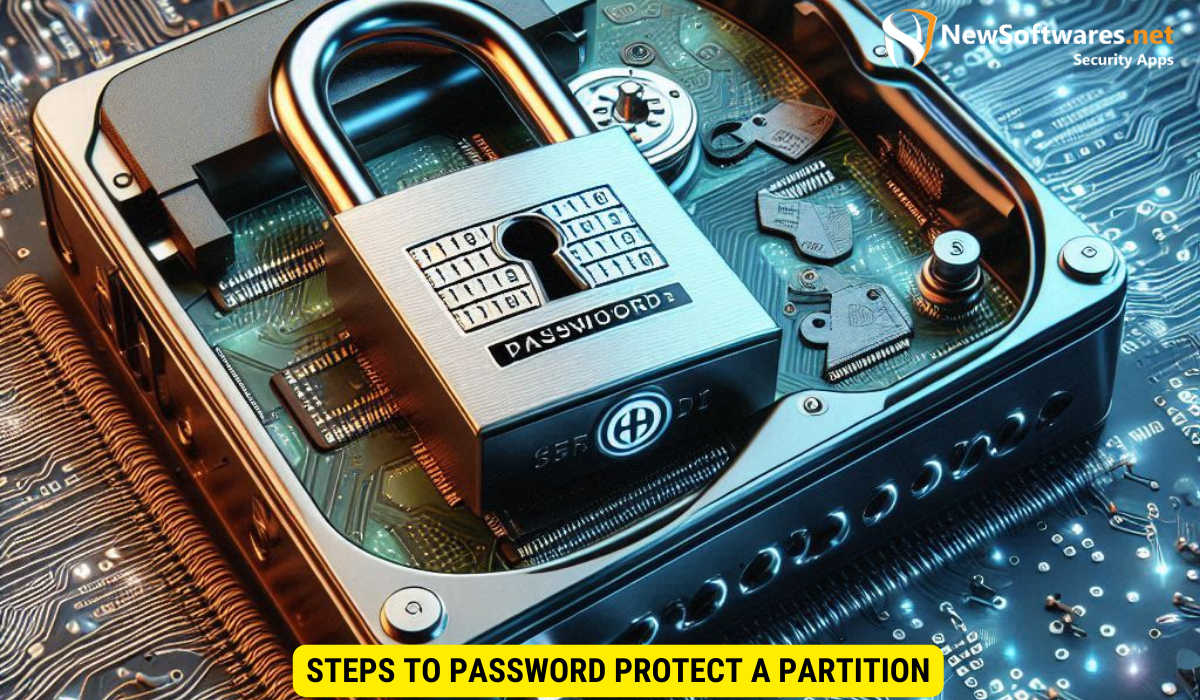To password protect a partition, you can use the built-in BitLocker feature in Windows. Here’s a step-by-step guide:
- Open This PC (File Explorer) and right-click the partition you want to protect.
- Select Turn on BitLocker.
- Choose to unlock the partition with a password and enter it twice.
- Decide where to save the recovery key (e.g., Microsoft account, USB flash drive, a file, or print it).
- Choose to encrypt the used disk space only or the entire drive.
- Select the encryption mode: New encryption mode or Compatible mode.
- Click Start encrypting to begin the process.
Once BitLocker finishes encrypting the partition, you will be notified.
I will guide you through the process of password protecting a partition on your computer. Partition protection is an essential security measure, especially if you store sensitive data on your device. By adding a password to your partition, you can prevent unauthorized access and keep your information safe. Let’s dive into the details of how to password protect a partition.
Understanding Partition Protection

Before we delve into the actual steps, let’s first understand why password protecting a partition is important. The security of your personal information is paramount, and partition protection adds an extra layer of defense. By password protecting a partition, you can control who has access to specific data stored on your computer. This is particularly useful if multiple users share the same device.
Importance of Password Protection
Unauthorized access to your data can lead to various privacy concerns. By password protecting a partition, you ensure that only those with the correct password can access the information stored within it. This helps protect your sensitive files, documents, and personal data from prying eyes and potential threats. It’s a proactive step to safeguard your privacy.
Basics of Disk Partitioning
Before diving into the process of password protecting a partition, it’s crucial to have a basic understanding of disk partitioning. Disk partitioning allows you to divide a physical storage device, such as a hard drive or SSD, into multiple sections. Each of these sections, also known as partitions, functions as a separate storage unit with its own file system, settings, and allocated space.
This division is useful for various reasons. For example, you can install different operating systems on separate partitions or organize your files more efficiently. Partition protection comes into play when you want to restrict access to specific partitions.
Now, let’s explore some additional benefits of disk partitioning. One advantage is that it helps improve system performance. By separating your operating system files from your personal data, you can minimize the risk of data corruption or loss. Additionally, if you encounter issues with one partition, it won’t affect the others, allowing you to troubleshoot and fix problems more easily.
Another benefit of disk partitioning is the ability to easily manage and organize your files. With separate partitions, you can categorize your data based on its type, such as work-related files, personal documents, or multimedia content. This makes it simpler to locate and access specific files, saving you time and effort.
Furthermore, disk partitioning can also enhance data security. By isolating sensitive files or confidential information on a separate partition, you can apply additional security measures, such as encryption or password protection, to further safeguard your data. This provides an added layer of defense against unauthorized access or potential data breaches.
Preparing for Partition Protection
Before you can password protect a partition, there are a few things you need to do to ensure a smooth process.
Necessary Tools for Partition Protection
First, you need to determine if your operating system provides built-in tools for partition protection. Windows users can use BitLocker, a feature available in certain versions of the operating system, to password protect their partitions. Mac users, on the other hand, can utilize the FileVault feature.
If your operating system doesn’t offer built-in tools, you can explore third-party software designed specifically for partition protection. There are several reliable options available online, with varying features and levels of security. Take some time to research and choose the one that best suits your requirements.
Assessing Your System’s Compatibility
It’s essential to ensure that your system is compatible with the partition protection method you intend to use. Check the system requirements for the built-in tools or third-party software you plan to utilize. Make sure your operating system version, hardware specifications, and available resources meet the necessary criteria.
By assessing compatibility beforehand, you can avoid any potential issues or limitations during the partition protection process.
Steps to Password Protect a Partition

Now that you’re prepared, let’s dive into the step-by-step process of password protecting a partition.
Creating a New Partition
The first step is to create a new partition on your storage device. This can be done using built-in tools or third-party software, depending on your operating system.
Once you have created the new partition, make sure to format it with the desired file system. This ensures that the partition is ready to be password protected.
Setting Up Password Protection
Now that you have the new partition ready, it’s time to enable password protection. Follow the instructions provided by your operating system’s built-in tools or the third-party software you have chosen.
During this process, you will be prompted to set a password for the partition. Make sure to choose a strong, unique password that is not easily guessable. Remember to store the password in a secure location for future reference.
Once you have successfully set up password protection, your partition is now secure and accessible only to those with the correct password.
Troubleshooting Common Issues
While password protecting a partition is generally straightforward, you may encounter certain issues along the way. Let’s take a look at some common problems and how you can resolve them.
Dealing with Forgotten Passwords
If you forget the password to your password-protected partition, don’t panic. Each operating system or third-party software provides mechanisms to reset or recover forgotten passwords. Refer to the documentation or support resources specific to your chosen method for detailed instructions on password recovery.
However, it’s important to note that password recovery methods may vary depending on the tools used. It’s always a good idea to keep a backup of your important files and documents to avoid potential data loss.
Resolving Partition Access Issues
In some cases, you may encounter difficulty accessing a password-protected partition. This can happen due to various reasons, such as system updates, compatibility issues, or incorrect password entry.
If you can’t access your partition, start by double-checking the password you entered. Make sure there are no typos or errors. If the problem persists, refer to the user documentation or online resources provided by your chosen method for troubleshooting steps specific to your situation.
Maintaining Your Password Protected Partition
Once you have successfully password protected a partition, it’s important to establish a routine for maintaining its security and performance.
Regularly Updating Your Password
As a best practice, consider changing your password periodically. This adds an extra layer of security and reduces the risk of unauthorized access. Choose a new strong password and update it within your partition protection settings.
Remember to keep a record of your updated password in a secure location to avoid any potential issues in the future.
Ensuring Optimal Partition Performance
To ensure optimal performance of your password-protected partition, it’s crucial to regularly update your operating system and any relevant software or tools. Updates often include bug fixes, security enhancements, and performance optimizations.
Stay vigilant about keeping your system up to date to benefit from the latest improvements. Additionally, maintain good system hygiene by regularly scanning for malware or potential security threats.
Key Takeaways
- Password protecting a partition adds an extra layer of security to your personal data.
- Before starting the process, assess your system’s compatibility and choose the appropriate tools.
- Follow the step-by-step guide to create a new partition and enable password protection.
- Be prepared for potential issues such as forgotten passwords and partition access problems.
- Maintain the security and performance of your password-protected partition by regularly updating passwords and your system.
FAQs
Q: Can I password protect an existing partition?
A: No, you cannot directly password protect an existing partition. You need to create a new partition and enable password protection during the setup process.
Q: Can I remove password protection from a partition?
A: Yes, you can remove password protection from a partition. Refer to the user documentation or online resources specific to your chosen method for instructions on how to disable password protection.
Q: Can I password protect multiple partitions on the same computer?
A: Yes, you can password protect multiple partitions on the same computer. Follow the same process for each partition you want to protect, ensuring you set unique passwords for each.
Q: Is password protecting a partition foolproof?
A: While password protecting a partition adds a significant level of security, it is not invulnerable to all potential threats. It’s important to follow best practices such as using strong passwords and keeping your system up to date to mitigate risks.
Q: What should I do if I encounter difficulties during the partition protection process?
A: If you encounter difficulties, refer to the user documentation or online resources provided by your chosen method for troubleshooting steps specific to your situation. If the problem persists, consider reaching out to customer support for further assistance.
Conclusion
Password protecting a partition is a crucial step in safeguarding your sensitive data and ensuring your privacy and security. By following the step-by-step guide and being aware of potential issues, you can confidently add an extra layer of protection to your computer. Remember to regularly update passwords and keep your system up to date for optimal security and performance.
